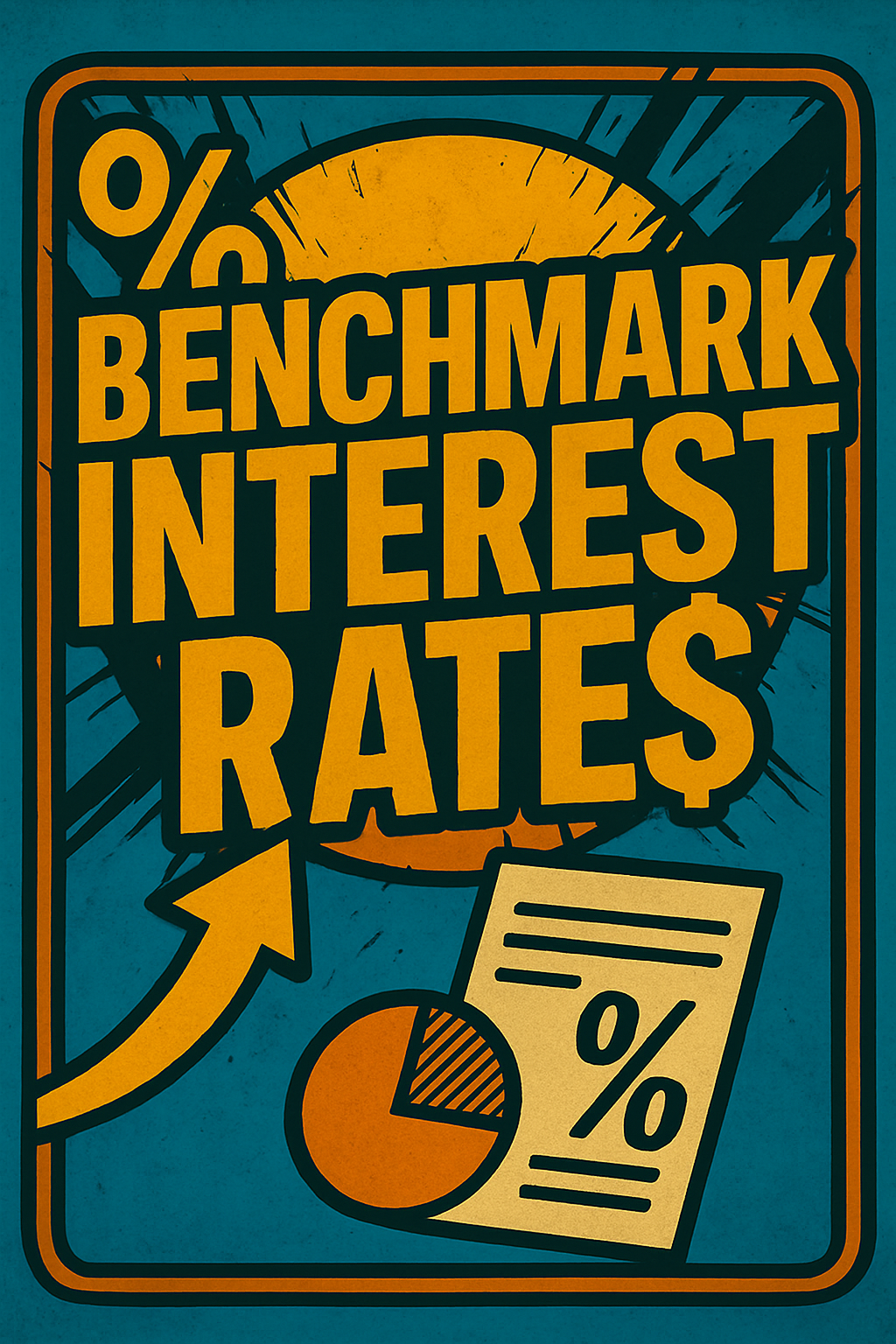Benchmark Interest Rates
“Where Money Gets Its Marching Orders”

Understanding Benchmark Interest Rates:
Benchmark interest rates (also called reference rates or indexes or base rates) are critical tools in the financial world. They affect how much businesses pay on loans, determine interest on savings, and serve as a foundation for contracts, investment decisions, and risk management.
A benchmark interest rate is a standardized rate used to determine borrowing or lending costs in financial contracts.
It acts as a base rate, to which a margin or spread is added to calculate the total interest rate on loans, bonds, and derivatives
(Base Rate + Spread = Effective Rate).
With the retirement of LIBOR, understanding the new landscape is more important than ever.
SOFR (Secured Overnight Financing Rate) has replaced LIBOR (London Interbank Offered Rate)
as the primary benchmark interest rate for many financial products, particularly in the U.S.
U.S. Domestic Benchmarks (Post-LIBOR)
| Benchmark | Type | Administered By | Notes |
|---|---|---|---|
| SOFR (Secured Overnight Financing Rate) | Risk-free, overnight | Federal Reserve Bank of New York | Main LIBOR replacement for USD; highly liquid and transparent |
| AMERIBOR | Credit-sensitive | American Financial Exchange | Used by smaller/regional banks; reflects bank credit risk |
| BSBY (Bloomberg Short-Term Bank Yield Index) | Credit-sensitive | Bloomberg | Includes credit and term structure; optional for corporate use |
| Prime Rate | Lending base rate | Commercial banks | Used in loans, credit cards; typically tracks Fed Funds Rate |
| Fed Funds Rate | Policy rate | Federal Reserve | Influences short-term interest rates broadly |
| U.S. Treasury Rates (1M, 3M, 1Y) | Risk-free | U.S. Treasury | Used in government and corporate finance benchmarking |
Examples of Benchmark Interest Rates
| Scenario | Benchmark Used | Rate Formula | Current Rate | Effective Rate | Use Case |
|---|---|---|---|---|---|
| U.S. Business Loan | Term SOFR (30-day) | SOFR + 2.25% | 5.35% | 7.60% | Commercial loan, floating-rate |
| Line of Credit | U.S. Prime Rate | Prime + 0.50% | 8.50% | 9.00% | Revolving credit line |
| Corporate Syndicated Loan | BSBY (3-month) | BSBY + 1.75% | 5.20% | 6.95% | Large corporate financing |
Risk-Free Rates
A rate that reflects the cost of borrowing with virtually no credit risk. These are based on highly secure lending activity, often involving collateral like U.S. Treasury securities.
SOFR, for example, is based on overnight repurchase (repo) transactions backed by U.S. Treasury securities — so there’s minimal credit risk.
These rates are stable, transparent, and transaction-based. Ideal for derivatives, secured lending, and systemic financial risk management.
✅ Pros:
Highly reliable
Immune to bank-specific risk
Regulatory support
❌ Cons:
Doesn’t reflect lenders’ credit costs
Can mismatch real-world borrowing conditions, especially for smaller or regional banks
Credit-Sensitive Rates
A rate that incorporates credit risk of banks or lending institutions and market stress. These rates move with changes in credit conditions — like rising in times of economic stress.
LIBOR historically captured this, which is why many banks liked it.
AMERIBOR and BSBY aim to offer credit-sensitive alternatives in a post-LIBOR world.
✅ Pros:
Closer to real-world lending costs
Helps banks preserve spreads that account for credit conditions
❌ Cons:
More volatile
Less transparent or liquid than risk-free rates
Lower regulatory preference

Best Practices associated with Benchmark Interest Rates
When business owners or financial leaders (like CFOs, controllers, or treasurers) are evaluating benchmark interest rates, the stakes might be high — these rates impact borrowing costs, investment returns, cash flow planning, and even contract compliance.
| Factor | Best Practice |
|---|---|
| Loan index | Confirm what benchmark you’re on |
| Rate type | Know whether it’s risk-free or credit-sensitive |
| Transition plans | Ensure fallback language exists |
| Spread | Understand and negotiate add-ons |
| Term structure | Match benchmark frequency to business cash flows |
| Advisors | Talk to your banker + accountant |
| Documentation | Keep a central file of benchmark-linked contracts |
Bonus: 🌍 Key Global Benchmark Rates
Here’s a breakdown of the most widely used benchmark rates, their regions, and core attributes.
| Benchmark | Region / Currency | Description | Key Use Cases |
|---|---|---|---|
| SOFR (Secured Overnight Financing Rate) | 🇺🇸 U.S. Dollar (USD) | Based on actual overnight repo transactions, nearly risk-free. | Loans, bonds, derivatives (post-LIBOR in the U.S.) |
| SONIA (Sterling Overnight Index Average) | 🇬🇧 British Pound (GBP) | Reflects overnight funding in UK markets. | GBP-based contracts and swaps |
| €STR (Euro Short-Term Rate) | 🇪🇺 Eurozone (EUR) | Based on eurozone banks’ wholesale overnight borrowing. | Euro-denominated loans, swaps |
| SARON (Swiss Average Rate Overnight) | 🇨🇭 Swiss Franc (CHF) | Based on repo transactions in CHF. | Swiss market lending and risk-free rates |
| TONAR (Tokyo Overnight Average Rate) | 🇯🇵 Japanese Yen (JPY) | Replaces JPY LIBOR; based on Japanese overnight funding. | JPY-linked financial instruments |
| BBSW (Bank Bill Swap Rate) | 🇦🇺 Australia | Based on bank-accepted bills in AUD. | Corporate lending and interest rate swaps |
| HIBOR (Hong Kong Interbank Offered Rate) | 🇭🇰 HK Dollar (HKD) | Interbank rate; similar to LIBOR but still in use. | Loans, swaps in Hong Kong |
| SHIBOR (Shanghai Interbank Offered Rate) | 🇨🇳 Chinese Yuan (CNY) | Quoted by Chinese banks daily. | Reference for CNY loans and derivati |

